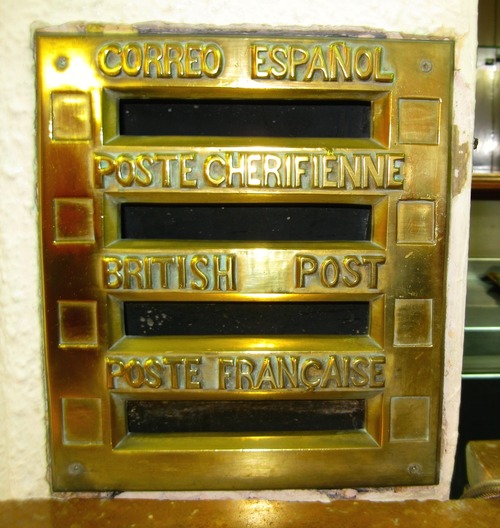
A Travelogue in Five Parts By Nicholas Kulish
Nicholas Kulish spent more than half a decade tracing the path of Aribert Heim, a Nazi concentration camp doctor who fled postwar justice in Germany. The research for his book on Heim, The Eternal Nazi, co-authored with Souad Mekhennet, led him to Denmark, Austria, Egypt, Morocco, and across Germany. This week on the Logger we’ll be posting five entries from his travels. Catch up with Part I. Part II, Part III.
IV. Tangier, Morocco
From some of the places that I visited, a single image remains lodged in my head. I am on the roof of La Tangerina hotel in Tangier. The sky is blue, the sun is bright, and Spain—Europe—is distinctly visible across the straits. Two bees will not leave the bright orange ashtray on my table alone, hovering, they land palpating with antennae, tasting. Does the color fascinate them or is it some sticky syrup stuck to the side? I keep taking pictures that do not capture the beauty of the moment or the fresh air or the feeling of gazing from one continent to the next and wanting to swim the distance. Instead I keep zooming in on the screen of my digital camera to marvel at how vividly sharp the bees’ legs and wings are in the picture, even though they are in flight.
In the morning I walk the hilly, winding roads, paint peeling from shutters and walls, elegant balconies fallen into disrepair. The sans serif lettering on the businesses describe a 1950s heyday unmatched since. I pass a motorcycle held together by packing tape. Every day the same old man is sharpening knives on a whetstone spun by what looks like a stationary bicycle. The old mailboxes with four slots—Correo Español, Poste Cherifienne, British Post, Poste Française—testify to Tangier’s past as William Burroughs’s Interzone. I pass the sign for Dean’s Bar 1937 where the night before I had watched a man in electric blue robes and visiting from the countryside, drink wine, liquor, and beer, a triple-fisting round robin that ended with him slumped down beside me so close I could trace the wriggling path of each wiry white hair in his beard.
The teenagers all want to follow you, give you the amateur tour guide treatment, harass you for a donation, but a purposeful walk and a curt “trabajo” and they leave you alone. It’s as if there’s a tacit agreement: You’re not a tourist, not a mark, just someone doing his job like everyone else.
Morocco was the first country to recognize the fledgling United States back in December 1777. The Moorish-style stucco...
You have reached your article limit
Sign up for a digital subscription and continue reading all new issues, plus our entire archives, for just $1.50/month.
Already a subscriber? Sign in




